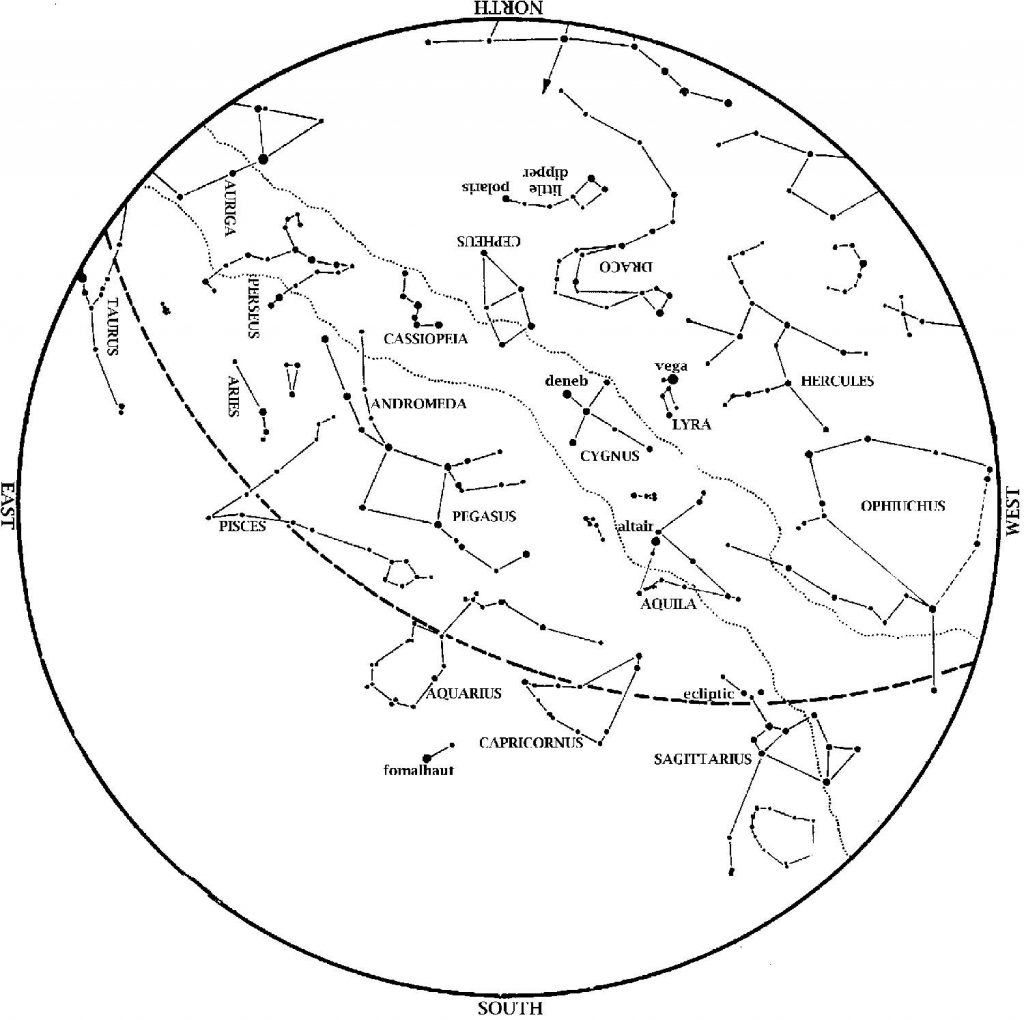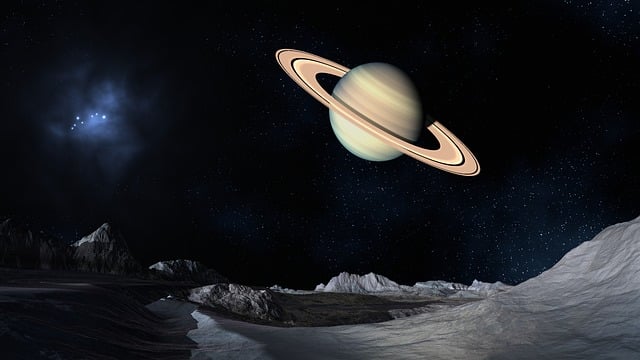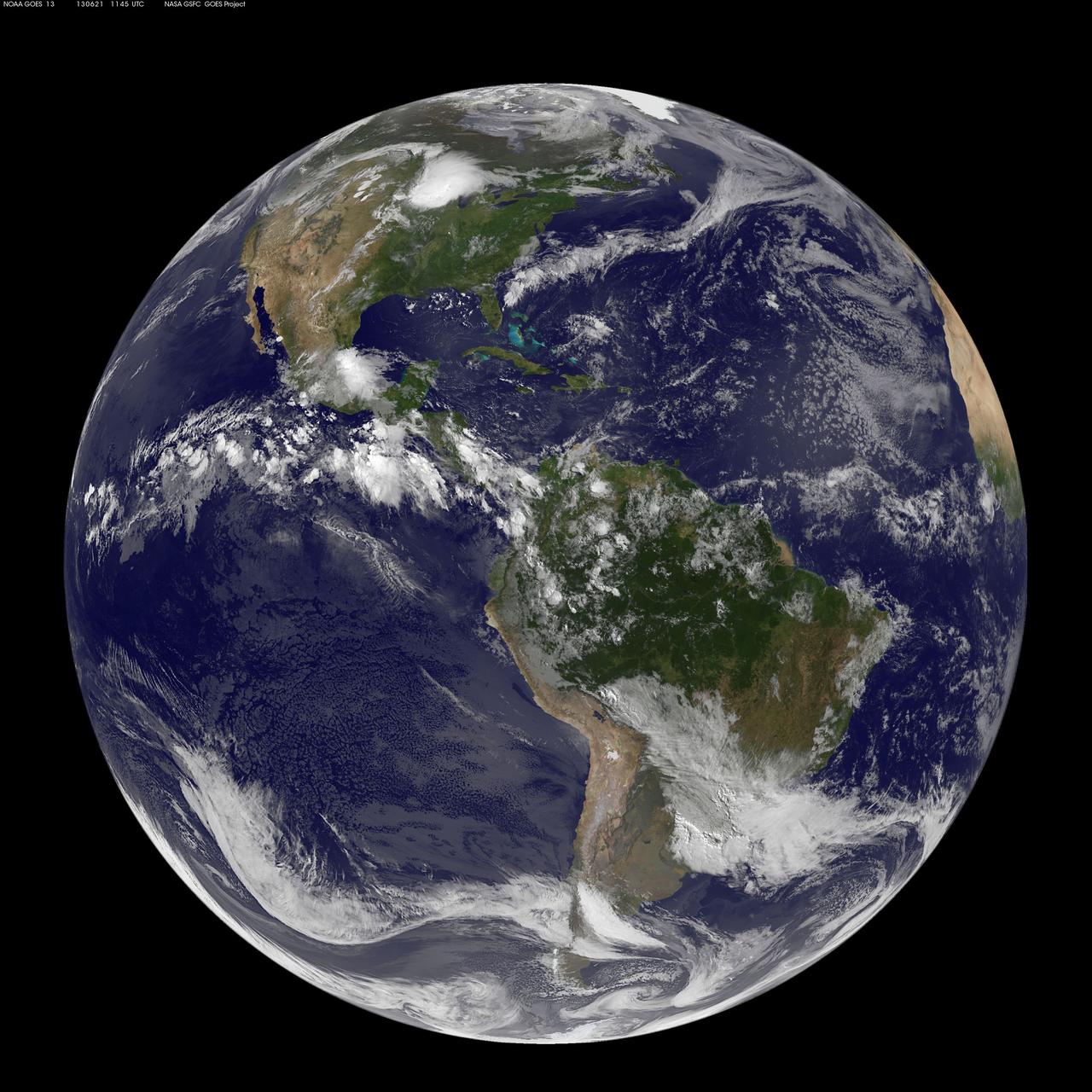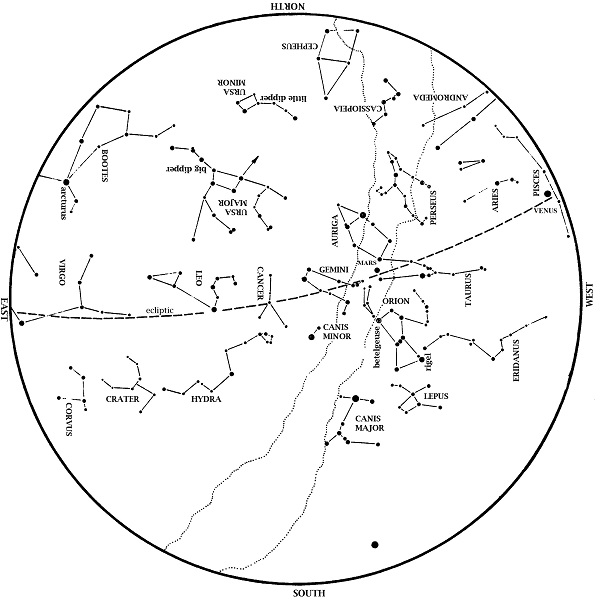
This star map shows the Houston sky at 10 pm CDT on October 1, 9 pm CDT on October 15, and 8 pm CDT on October 31. To use the map, put the direction you are facing at the bottom.
Celestial Happenings This Month

The Milky Way arch emerging from the Cerro Paranal, Chile, on the left, and sinking into the Antofagasta’s night lights. The bright object in the center, above the Milky Way is Jupiter, somehow elongated due to the panoramic projection. The Magellanic Clouds are visible on the left side, and a plane has left a visible trace on the right, along the Vista enclosure. Author: Bruno Gilli/ESO. Source: Wikimedia Commons.
Autumn represents sort of an ‘intermission’ in the sky, with bright summer stars setting at dusk, while bright winter patterns such as Orion have not yet risen. The ‘teapot’ of Sagittarius sets in the southwest early in the evening. The Summer Triangle is high in the west. Meanwhile, the Great Square of Pegasus is in the east, indicating that autumn has begun. The stars rising in the east are much dimmer than those overhead and in the southwest because when we face east at dusk in October, we face out of the Milky Way plane. The center of our Galaxy lies between Scorpius and Sagittarius, while the Summer Triangle is also in the galactic plane. Pegasus, on the other hand, is outside the plane of our galaxy and is a good place to look for other galaxies. Nearby constellations Andromeda and Triangulum (a small triangle) contain the spiral galaxies nearest to our own.
Saturn is well placed for evening viewing, in the southwest to the upper left of reddish Antares at dusk.
Venus remains a brilliant morning star this month, but it is now getting noticeably lower in the sky each morning. Look in the east at dawn. Venus outshines everything in the sky except the Sun and the Moon.
Mars begins October two and a half degrees below the much brighter Venus. You can watch Venus pass within 0.13 degrees of Mars right before dawn on the 5th. After that date, Mars appears above Venus as Venus pulls away from it, heading towards the Sun.
Jupiter is lost in the Sun’s glare and out of sight this month. It is at conjunction (behind the Sun from Earth’s point of view) on October 26..
Moon Phases In October, 2017
Full Oct. 5, 1:40 p.m. Last Quarter Oct. 12, 7:25 a.m.
New Oct. 19, 2:12 p.m. 1st Quarter Oct. 27, 5:22 p.m.
Due to flooding from Hurricane Harvey, the George Observatory is closed until at least November 7.
Clear Skies!








